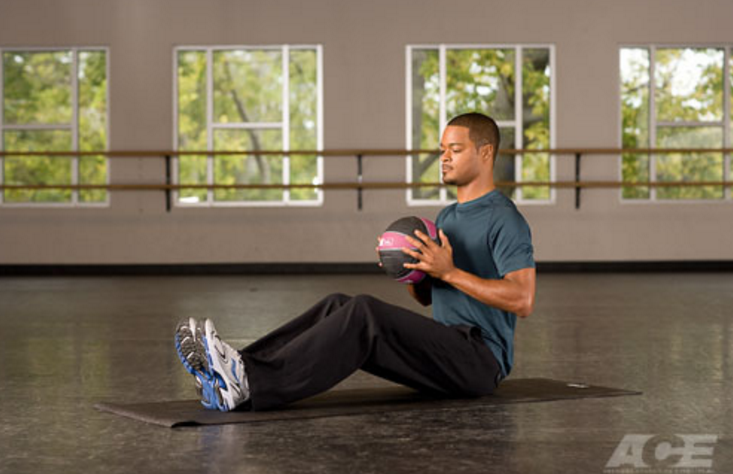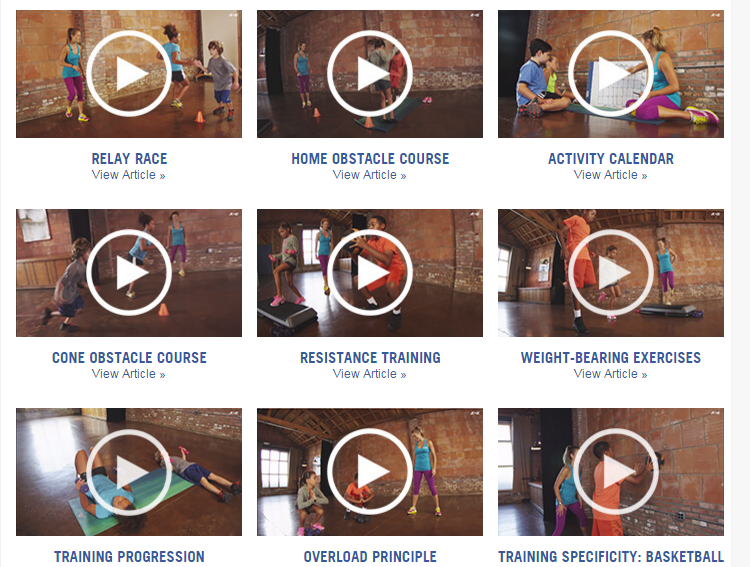‘Tis the season for stress, missed workouts, and falling off the workout wagon. We know that the holiday season is a hard time to keep honest about our calorie intake and committed to exercise. So to battle the bulge, make your exercise programs easy to fit into any schedule and use calorie burning exercises.
Here are two holiday workouts in two convenient time-frames that will fit into anyone’s schedule, can be performed just about anywhere and will help to stave off the extra pounds from the holiday festivities.
Got 15 minutes? Help burn off a few cookies or maybe a small slice of pie.
Equipment needed: foam roll, medicine ball, hand weights, stability ball.
Where it can be performed: at home, in the park, at the gym.
To keep the exercise session short, begin with foam rolling potentially tight areas such as the calves, IT band and lats. The foam rolling warm-up should last no more than five minutes.
Immediately after foam rolling, perform this circuit of exercises working the major muscle groups. Be sure to move quickly from one exercise to another, keeping the heart rate elevated and thus, burning more calories.
- Begin resistance training with a Squat to Overhead Press being sure to keep the abdominals drawn-in when moving the arms overhead. You can use a moderate weight medicine ball or moderate resistance hand weights to perform the exercise. This exercise works the calves, glutes, inner and outer thigh, abs, back, and shoulders.


- Move from the squat to overhead press exercise to a Feet-on-Ball Push-up with Abdominal Roll-up. This exercise works the abs, glutes, chest, and shoulders.

- Next, perform a Ball Dumbbell Row. This exercise works the core, glutes, and major back muscles.

- The last exercise in the succession is a Walking Lunge with Medicine Ball Rotation. This exercise works the entire lower body, abdominals, obliques, shoulders, and back muscles.

Sets: 2-5 / Repetitions: 10-12
Remember to move quickly from one exercise to another. Perform the circuit of exercises two to three times based on time available. Depending on ability level, average exercisers can perform 3 sets of this circuit routine within 10 minutes. If it falls within the time allotment, you may perform more than three sets, however do not go over five sets of the routine.
Got 30 minutes? Burn off some holiday appetizers!
Equipment needed: foam roll, tubing or cable-based machine, hand weights, stability ball.
Where it can be performed: at home, in the park, at the gym.
A tremendous amount of calorie burning can be done in 30 minutes. With stabilization training, clients can burn a lot of calories because it requires more muscles to be recruited to complete the activity. Given this, short workouts can be calorie crushers with the right exercises.
Begin with foam rolling of potentially tight areas such as those listed above. Again, these foam rolling exercises should take no more than five minutes to complete.
- Start with a short cardio burst for 5 minutes to raise the heart rate a bit. If you can’t make it to the gym to use the cardio equipment, home or outdoor activities are simple alternatives. Trying a brisk walk or light jog, or use a step for step-ups.
- Stretch major muscles that might be tight such as the calves, hip flexors and lats. Hold each stretch for 30 seconds. This portion of the workout should take about 3-4 minutes.
- Move on to resistance training. Begin with a Lunge to Curl and Overhead Press. You will need small hand weights to perform the exercise. This move works the entire lower body, biceps, abs, back, and shoulders.

- Next, do a Squat to Row. You will need a piece of tubing or a cable-based machine. (If performing this routine at home, place the tubing around a solid piece of heavy furniture or a fixture that can hold the tubing steady and is stable enough to withstand the resistance of you pulling on the tubing, or outdoors around a fence pole that will provide the necessary stability and resistance.) This exercise works the lower body, abdominals, and major muscles of the back.


- Move on to a Stability Ball Dumbbell Chest Press. You will need a stability ball and hand weights. This exercise works the abs, glutes, back muscles, chest, and triceps.


- The last exercise is a Single-leg balance with triceps extension. You will need either tubing placed around a sturdy object set up higher than your shoulders, or a cable-based machine. Be sure to switch balance legs on the next round of the exercise circuit to make sure both legs are getting an equal workout.


Sets: 2-5 / Repetitions: 12
Perform 12 repetitions of each exercise, remembering to move quickly from one exercise to another. Perform the circuit of exercises two to three times based on time. Depending on ability level, average exercisers can perform 3 sets of this circuit routine within 15 minutes. If it falls within the time allotment, you may perform more than three sets, however do not go above five sets of the routine.
Exercise is no longer an option for most people, but a necessity to live a better life. Realistically, everyone has 15-30 minutes during this busy time of year to get in a great workout – even if making it into the gym is not an option. These workouts are quick, packed full of calorie burning exercises and built so that they can be performed anywhere. Use these workouts yourself or share them with a client, friend or peer – either way – keep moving this holiday season!
http://blog.nasm.org/uncategorized/best-holiday-workouts-youre-short-time/




 It’s important to include warming up and cooling down in your exercise routine. Consider the benefits:
It’s important to include warming up and cooling down in your exercise routine. Consider the benefits:

